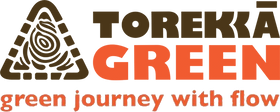Tracking Down The Source
A method used to provide product traceability and quality assurance. Its standards primarily include animal welfare, ensuring that the production of down materials does not cause unnecessary harm to animals. Producers are required to comply with local animal welfare laws and adopt best practices based on guidelines provided by international financial companies for animal welfare in the livestock industry.
The purpose of tracing down is to provide consumers with transparency and confidence, allowing them to know the origin and quality of the products they purchase. The main standards for tracing down include:
- Source tracing: A tracking system is implemented to trace the original source of the down, ensuring that it comes from legal and reliable sources.
- Quality assurance: The tracking system ensures that the composition and purity of the down meet the standards, guaranteeing product quality.
- Sustainability assurance: Tracing down ensures that the collection process complies with sustainability standards, including considerations for animal welfare, resource usage, and environmental protection.
Animal welfare is an essential aspect of these standards, requiring producers to comply with local animal welfare laws and refer to the guidelines provided by international financial companies for best practices in animal welfare. These guidelines offer recommendations for optimal practices, including aspects such as housing conditions, disease prevention and medical care, and appropriate nutrition and feed.
Through these standards and regulations, tracing down provides assurance and confidence, allowing consumers to choose products that meet animal welfare and sustainability requirements. Additionally, it encourages producers and various stakeholders in the supply chain to establish monitoring and tracking mechanisms to ensure the effective implementation of animal welfare standards.


More stories
The Power of Eco-Friendly Waterproof Materials
BECOME A TOREKKĀ
Green is the new colour. Gear up and begin your flow with the new green journey.












